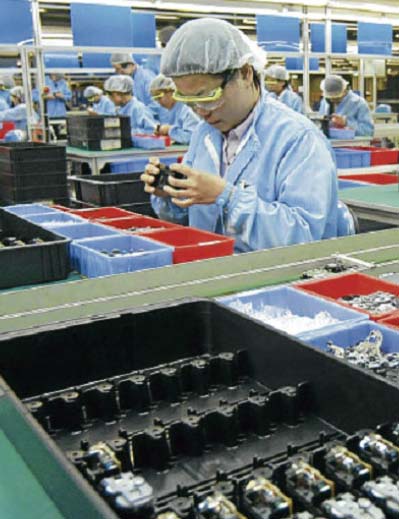The factory called ‘school’
Professor Tan Sri Dato' Dzulkifli Abdul Razak
Learning Curve: Perspective
New Sunday Times - 11-12-2011
IMAGINE trying to manufacture a 21st-century computer chip in a 19th or even a 20th century factory. The factories would never have been able to do it, regardless of their efficiency and sophistication.

There was always a gap between the two periods unless it was bridged. This is where the role of education becomes crucial.
Indeed, the nomenclature may sound similar. But the “chip” of the 20th century is not the same as that of the 21st century and beyond.
They may serve similar functions, but they are markedly different in capacities, technology-wise.
Similar arguments could be used when we talk about schools and the education system.
Imagine educating a student for the 21st century in a 20th-century school, let alone that of the 19th.
No doubt there is an immense gulf between students who received a 20th-century education and those from a 21st-century learning environment, regardless of their excellence. In fact, what was accepted as excellent previously may not be so when time moves on.
But why talk about a 20th-century school in the 21st century? Surely all schools belong to this century and the education that go along with it. While this is what we hope for, in reality this is not the case most of the time.
Today, schools and even universities are the “social innovation” that dates back to more than a century ago. The usefulness of such innovation has “expired”, especially the way they are organised and structured.
For example, the classroom arrangement alone is sufficient to tell us that it is time to innovate further along with a new mode of delivery and communication.
The current “monologue” requires students to remain seated most of the time (just like workers on the assembly line) during the so-called “learning” process, at least until the bell rings.
There will then be a small change over time, and another “monologue” takes over, repeating the entire “event”. It may involve a different person whom we call the teacher, likened to a “sage on the stage”.
The image of a sage presupposes that the teacher knows all that needs to be learned, and that there is one answer to every question.
Using the factory metaphor, the teacher is the operator who is trained to ensure that the assembly line runs smoothly as products (students) undergo a process of value-adding (the learning process) before they are subjected to a standardised quality inspection (examination).
Those who make it will be offered in the marketplace, which conforms to the forces of supply and demand (employment).
When demand is poor, the operators are retrenched; the assembly line is scaled down to the minimum so that the product is not in surplus and does not cause a drop in price (profit).
This is all well and good when dealing with a lifeless manufactured item. This analogy does not fit human beings. During bad times, such as currently, when there is poor economic growth, unemployment figures are made worse by falling demand.
Unlike the factory, it is inconceivable to have learning institutions slow down — let alone close, just to be in tune with the lagging tempo, and to pick up again when things turn around. It is unethical, to say the least.
This perhaps is the main point of departure for schools to be modelled on factories emerging from the Industrial Age some 150 years ago.
And that is the reason why as we pass into the Post-Industrial Age, we need to debunk the assembly line model with all its inherent limitations to facilitate a totally new learning space (the former classroom) for the future.
Education has always been the social innovation that creates such a space to allow a new system to grow, after all.
While no one can predict exactly how this will pan out, as in the case for all types of disruptive innovation, what is certain is that the “school” (for want of a better term) needs to be reorganised as part of the continuous learning space supported by the ubiquitous technology connecting it to an even larger global learning arena.
The so-called teacher, rather than claiming to be the know-all who rules over the classroom, is now also a learner connected to a higher learning space globally and serves no more than as a guide to the student’s process of self-discovery. Learning is hardly linear anymore, and the relevance of a standardised curriculum, examination and testing as in the case of mass education (like mass production) is highly questionable since learning is now tailored to individual needs and interest!
In short, the future of education is exciting, provided we are willing to exit from the factory called school and move quickly into the 21st century.
Otherwise, we will remain frozen in time to the detriment of our future.
- The writer is vice chancellor of Albukhary International University
